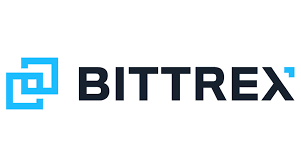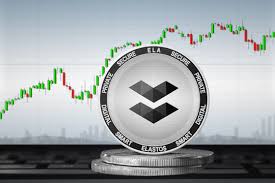Litecoin and Bitcoin. Which currency is the best? Since the introduction of Litecoin in 2011, every qualified economist has felt it his duty to compare the two popular coins.
The experts not only discussed the individual characteristics of the coins and their advantages over each other but also entered into a complex debate, discussing what developers need to do to make their currencies successful.
Bitcoin is the centerpiece of the crypto community. Litecoin, on the other hand, has attracted those who are not satisfied with some aspects of the most popular currency, but who believe in a bright future for crypto money.
Although both Bitcoin and Litecoin have minor technical differences, the task is the same: transferring value using cryptographic principles. But when the coins met face to face, it is clear that Bitcoin came out the winner.
Litecoin vs Bitcoin: at a glance
We can compare cryptocurrencies from different angles, but the most obvious indicator is their market capitalization, that is, the total amount of currency on the market (usually in US dollars). Bitcoin is currently ranked # 1 with a market cap of over $ 56 billion, while Litecoin is ranked # 5 with $ 2.56 billion.
Bitcoin is the standard cryptocurrency preferred by most users and platforms. You might be thinking, “So why are we talking about Litecoin? Its market capitalization is a crumb of the pie compared to the $ 45 billion bitcoin chunk. ” But this is one of the few altcoins with an active user base and legalized rights.
Functions common to Litecoin and Bitcoin: An online payment system that uses cryptocurrency instead of the national currency, for example, instead of dollars. Bitcoin and Litecoin transact with BTC and LTC, respectively. As cryptocurrencies, they have created the same community and rely on similar cryptographic principles.
Bitcoin was released in 2009 and became the first cryptocurrency. Litecoin emerged just two years later, in 2011, but has since done its best to catch up with Bitcoin.
Litecoin vs Bitcoin: deep analysis
Both currencies may seem to be almost the same, but in reality, they differ greatly in their views on the market and technical capabilities.
In the next four paragraphs, we’ll cover what makes each coin special. You will understand how much more advanced the Litecoin algorithm will always be an outsider due to the all-encompassing Bitcoin network.
1) Bitcoin is much more popular
With a market capitalization of about 22.5 times that of Litecoin, Bitcoin’s popularity makes it an obvious choice for the investment community.
According to Google Trends, Litecoin is unlikely to match Bitcoin’s prominence. At the same time, the demand for Bitcoin has skyrocketed in the last 2 years, while Litecoin has been holding up exactly all these years.
Since cryptocurrencies are considered to be inherently risky investments, Bitcoin seems to be relatively stable against its background due to its extremely high market capitalization. Of course, its price remains incredibly volatile.
In comparison, a $ 1 billion loss would halve Litecoin’s market cap, while Bitcoin would need a $ 40 billion recession to do so – in which case the events would be just as catastrophic.
Despite all this, Litecoin is still quite popular in the community.
2) Litecoin holds more coins
Many traders take into account the total number of coins programmed into the cryptocurrency. Bitcoin is capped at 21 million coins, while Litecoin has 84 million.
Both currencies still have a long way to go until they hit their margins, but this remains a problem due to the expected price volatility as the coins hit their highs.
Bitcoin currently has about 16.5 million coins, while Litecoin has about 52 million. This means that the amount of BTC is equal to 78% of its maximum value, while Litecoin is about 61%. If Bitcoin is getting closer to the bottom line, then Litecoin may receive more investment from traders trying to avoid the volatility of the popular currency.
However, these advantages of Litecoin are largely relative: both Bitcoin and Litecoin can be divided into fractions, so the maximum number of coins should not affect the value of any currency.
For example, upon reaching the maximum, Bitcoin users will only be able to transfer 0.00000001 BTC. The possibility of placing more coins, in this case, will become impossible.
3) Litecoin has a faster transaction processing
The average Bitcoin transaction confirmation time is just over 9 minutes per transfer, while Litecoin is processed in 2.5 minutes. So Bitcoins transactions are about four times faster than Bitcoin, which is why the currency attracts users who value time, such as traders.
Keep in mind that transactions are technically instant on both networks, but confirmation by other network participants takes some time. Waiting for a full 9-minute Bitcoin transaction or a 2.5-minute Litecoin transfer will ensure that the transaction was valid.
Merchants can accept transactions instantly without waiting for confirmation, but they risk being the victim of “double sending”.
This seemingly significant advantage of Litecoin over Bitcoin, however, is offset by the offerings of third-party services that make instant transfers secure.
4) Litecoin cryptographic algorithm is suitable for beginners
Experienced cryptocurrency users consider the technical components of both when comparing the two currencies.
Bitcoin uses the SHA-256 algorithm and Litecoin uses the Scrypt algorithm, which determines the process of “mining” new coins. “Miners” confirm the transactions of other users and in return receive a reward in the selected currency.
Many believe that Bitcoin’s SHA-256 algorithm is more complex than Litecoin Scrypt, which therefore allows for a higher degree of parallelism. Bitcoin miners have developed sophisticated methods to mine coins with high efficiency.
The most effective method involves the use of an ASIC – Application-Specific Integrated Circuits. ASICs are essentially hardware systems (similar to processors) built exclusively for mining BTC.
There is huge competition in the mining of this currency since the number of miners is off the charts. It also uses many technical innovations such as ASICs. New miners are struggling to get started without sufficient processing power and costs, which often outweigh revenues, but cannot compete with experienced users.
Litecoin was created mainly for those people who no longer could mine Bitcoin because their processors could not compete with ASICs. Scrypt is more for beginners.











